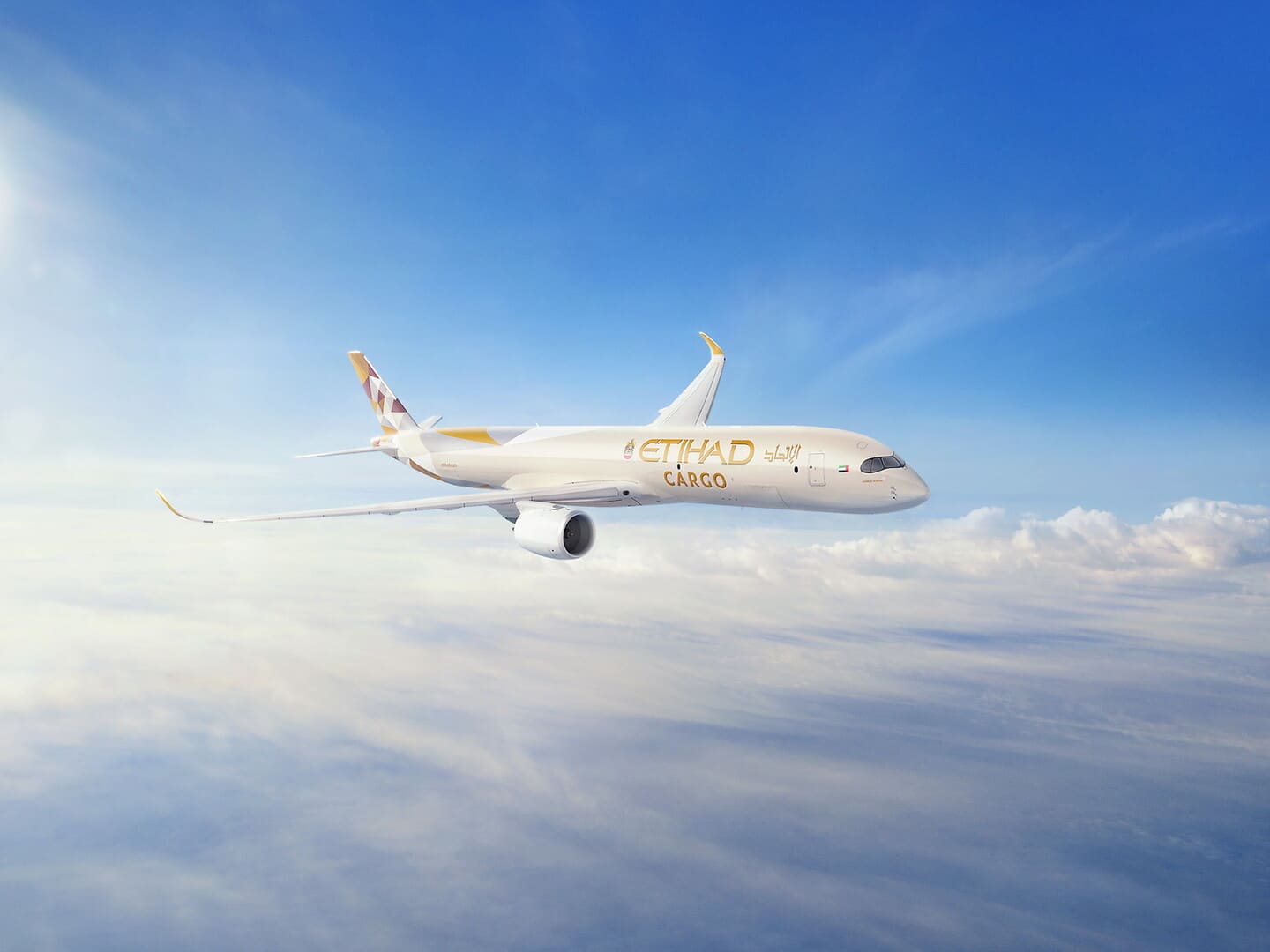Airlines
Etihad Airways scales up its cargo operations with Airbus’ new generation A350F freighter
Etihad Airways scales up its cargo operations with Airbus’ new generation A350F freighter

Following its initial commitment made public at the Singapore Airshow, Etihad Airways has confirmed its order with Airbus for seven of the new generation A350F freighters. By utilising the best cargo aircraft on the market, the freighters will increase Etihad’s freight capacity. The national airline of the UAE will be strengthening its partnership with Airbus and adding to its current order of the largest passenger version of A350-1000 aircraft, five of which have already been delivered, with the A350F.
This new generation large freighter offers clients support by boosting operational efficiencies while at the same time decreasing environmental impact. It also gives unique and unequalled benefits in terms of range, fuel efficiency, and CO2 savings. In order to maintain aircraft performance and maximize reliability, Etihad has also finalised a long-term deal with Airbus’ Flight Hour Services to support the whole A350 fleet.
The A350F, the world’s most cutting-edge advanced long-range family, offers a high degree of compatibility with the A350 passenger models. The A350F can serve all cargo markets with a payload capacity of 109 tonnes. The aircraft has a sizable main deck cargo door, length and cargo capacity of its fuselage have been optimised for the industry’s typical pallets and containers.
The A350F’s airframe is made up of more than 70% of modern materials, resulting in a 30 tonne less take-off weight and at least 20% lower fuel consumption and emissions than its closest rival at the time. The higher CO2 emissions limits set by the ICAO that go into effect in 2027 are fully met by the A350F. With the commitment made today, six clients have placed 31 solid orders for the A350F.
The A350F helps to shape the future of air freight by meeting the impending wave of large freighter replacements and the changing environmental standards. Rolls-Royce Trent XWB-97 engines with the most recent technology and best fuel efficiency will power the A350F.

Airlines
Air India Rolls Out A350s for Delhi-New York JFK and Newark Routes

In a major development for North American travelers, Air India has announced the deployment of its state-of-the-art Airbus A350-900 aircraft on two key routes: Delhi to New York and Delhi to Newark.
The service on the Delhi-New York route will commence on November 1, 2024, while the Delhi-Newark route will see its inaugural flight on January 2, 2025.
The introduction of the air india a350 will bring significant enhancements to Air India’s offerings, particularly with the launch of its Premium Economy class. air india retrofit This new class will feature 24 wide seats arranged in a 2-4-2 configuration, providing passengers with extra legroom and a more comfortable flying experience.
Soon, Air India aircraft will feature onboard WiFi & all-new cabins: Click here
“We are encouraged by the positive guest feedback we have received from the domestic deployment of our air india a350 interior to offer our hero product on the Delhi-New York JFK and Delhi-Newark routes. This is a significant leap forward for our U.S. operations that also underscores our commitment to continuous improvement,” said Campbell Wilson, Chief Executive Officer & Managing Director of Air India.
The A350’s Business class will set new standards with 28 private suites, each equipped with full-flat beds, direct aisle access, and personal wardrobes. Economy class will be configured to accommodate 264 passengers in a 3-4-3 layout. Across all cabins, passengers will enjoy the latest Panasonic eX3 in-flight entertainment system, offering over 2,200 hours of content.
Air India’s First A350-900: Interior, Routes, &Inflight Features: Click here
This strategic deployment marks a notable enhancement in Air India’s U.S. operations, with 60% of its flights to the U.S. now featuring new or upgraded cabin interiors. The air india new international routes currently operates 51 weekly flights to five U.S. destinations: New York JFK, Newark, Washington DC, Chicago, and San Francisco.
The revamped cabins, advanced in-flight entertainment systems, and improved service standards represent air india wifi commitment to providing a superior travel experience. “We believe this enhanced offering will solidify Air India’s position as a leading carrier and attract travellers seeking a world-class flying experience between India and the United States,” the airline stated.
Seats on these flights are now available for booking on Air India’s website, mobile app, and through travel agents, ensuring that passengers can easily plan their journeys on these newly upgraded routes.
Air India Economy vs Qatar airways economy: which is best?:Click here
-

 Travel1 week ago
Travel1 week agoAir India to Expand US Operations with Three New Routes After a Decade
-

 Travel2 weeks ago
Travel2 weeks agoWhy We Should Avoid These Stamps in a Passport
-

 Airlines1 month ago
Airlines1 month agoInvestigations Reveal Fake Chinese Titanium in Boeing and Airbus Jets
-

 Tech4 weeks ago
Tech4 weeks agoChina’s CATL Plans 1,800-Mile Electric Plane Launch by 2027
-

 Airport3 days ago
Airport3 days agoTop 10 Largest Airports in the World by Size
-

 Aerospace4 weeks ago
Aerospace4 weeks agoChina’s Fighter Jets Turn Wings into Autonomous Drones
-

 Airlines4 days ago
Airlines4 days agoAir India Rolls Out A350s for Delhi-New York JFK and Newark Routes
-

 Defence3 weeks ago
Defence3 weeks agoBoeing Enhances Chinook with New Engines and Block II Upgrades at $96 Million







